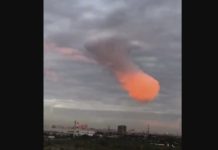For the first time in more than two years, the sun is really flaring.
Yesterday, May 29th, Earth-orbiting satellites detected a M1-classsolar flare (07:24 UT) followed by a C9-class flare (10:46 UT). These are the strongest solar flares since Oct. 20, 2017.
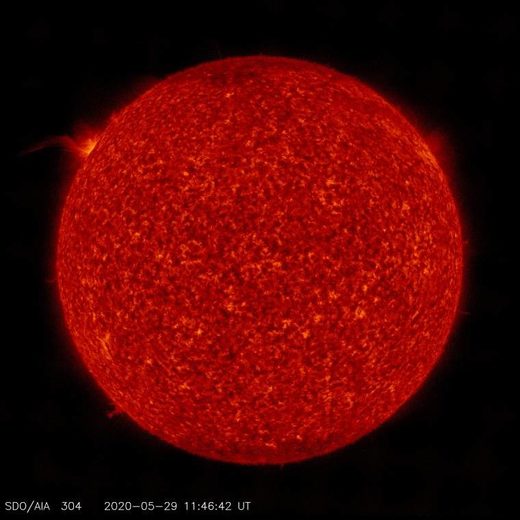
Yesterday, in the pits of the deepest Solar Minimum of the Space Age, the sun unleashed a flurry of solar flares.
Both came from a likely sunspot hiding just behind the sun’s northeastern limb. The source of the activity is now turning toward Earth as it rotates into view over the sun’s northeastern limb.
These are the strongest solar flares since Oct. 20, 2017 – the last time the sun produced an M-class eruption. In fact, they might be even stronger they seem. The explosions were partially eclipsed by the edge of the sun, reducing their apparent intensity.
So far the flares have not much affected Earth. The underlying sunspot is facing away from our planet. However, that could soon change. Solar rotation will bring the ‘spot over the limb within the next 24 to 48 hours. Future flares could be geoeffective.
Technically, we don’t know for sure that the active region is a sunspot. The underlying dark cores have not yet been sighted. Confirmation awaits better viewing geometry – probably tomorrow.
Noctilucent Clouds are Intensifying
On May 17th, NASA’s AIM spacecraft detected the first noctilucent clouds (NLCs) of summer. Those first electric-blue smudges were barely visible. Since then, however, the clouds have rapidly intensified.
Recent images from orbit show a growing bank of NLCs pinwheeling just inside the Arctic Circle:
NLCs are Earth’s highest clouds and are seeded by meteoroids. They float at the edge of space more than 80 km above the ground. The clouds form when summertime wisps of water vapor rise up to the mesosphere, allowing water to crystallize around specks of meteor smoke. Last summer, they spread as far south as Los Angeles and Las Vegas, setting records for low-latitude sightings.
It’s early in the 2020 season, so the clouds are still concentrated around the North Pole. Nevertheless, people in Europe are starting to see them.
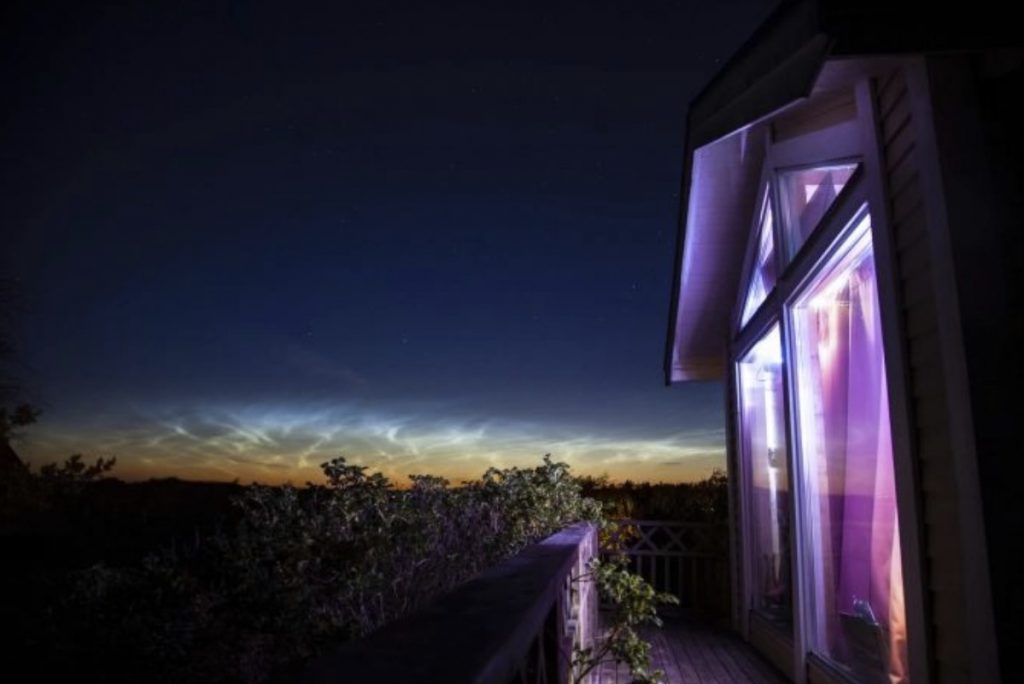
But it’s rare that they glow this brightly over such a large area.
Noctilucent clouds have been likened to a great “geophysical light bulb” because they turn on abruptly, reaching almost full intensity over a period of ~10 days. By early June, therefore, we can expect the clouds to spread farther south with a significant increase in brightness. The circular rhythm of the pinwheel motion (caused by a 5-day planetary wave) may even allow us to start issuing predictions of latitude ranges where the clouds are most likely to appear.
Cosmic Rays in the Atmosphere
Approximately once a week, Spaceweather.com and the students of Earth to Sky Calculus fly space weather balloons to the stratosphere over California. These balloons are equipped with radiation sensors that detect cosmic rays, a surprisingly “down to Earth” form of space weather.
Cosmic rays can seed clouds, trigger lightning, and penetrate commercial airplanes. Furthermore, there are studies ( #1, #2, #3, #4) linking cosmic rays with cardiac arrhythmias and sudden cardiac death in the general population.
Their latest measurements show that cosmic rays are intensifying, with an increase of more than 18% since 2015:
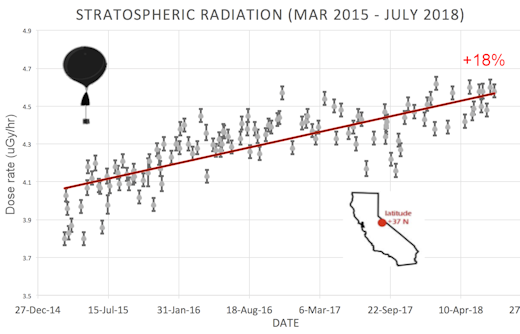
The data points in the graph above correspond to the peak of the Regener-Pfotzer maximum, which lies about 67,000 feet above central California. When cosmic rays crash into Earth’s atmosphere, they produce a spray of secondary particles that is most intense at the entrance to the stratosphere. Physicists Eric Reneger and Georg Pfotzer discovered the maximum using balloons in the 1930s and it is what we are measuring today.
En route to the stratosphere, our sensors also pass through aviation altitudes:
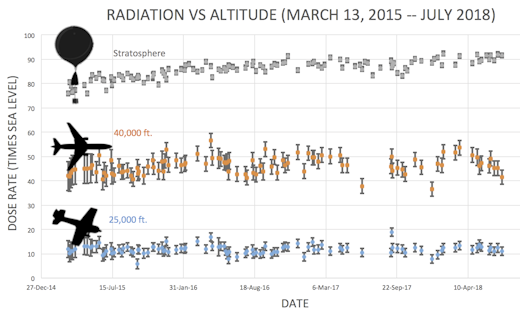
In this plot, dose rates are expessed as multiples of sea level. For instance, we see that boarding a plane that flies at 25,000 feet exposes passengers to dose rates ~10x higher than sea level. At 40,000 feet, the multiplier is closer to 50x.
The radiation sensors onboard our helium balloons detect X-rays and gamma-rays in the energy range 10 keV to 20 MeV. These energies span the range of medical X-ray machines and airport security scanners.
Why are cosmic rays intensifying?
The main reason is the sun. Solar storm clouds such as coronal mass ejections (CMEs) sweep aside cosmic rays when they pass by Earth. During Solar Maximum, CMEs are abundant and cosmic rays are held at bay. Now, however, the solar cycle is swinging toward Solar Minimum, allowing cosmic rays to return. Another reason could be the weakening of Earth’s magnetic field, which helps protect us from deep-space radiation.
More space weather news on Strange Sounds and Steve Quayle. [Spaceweather]










